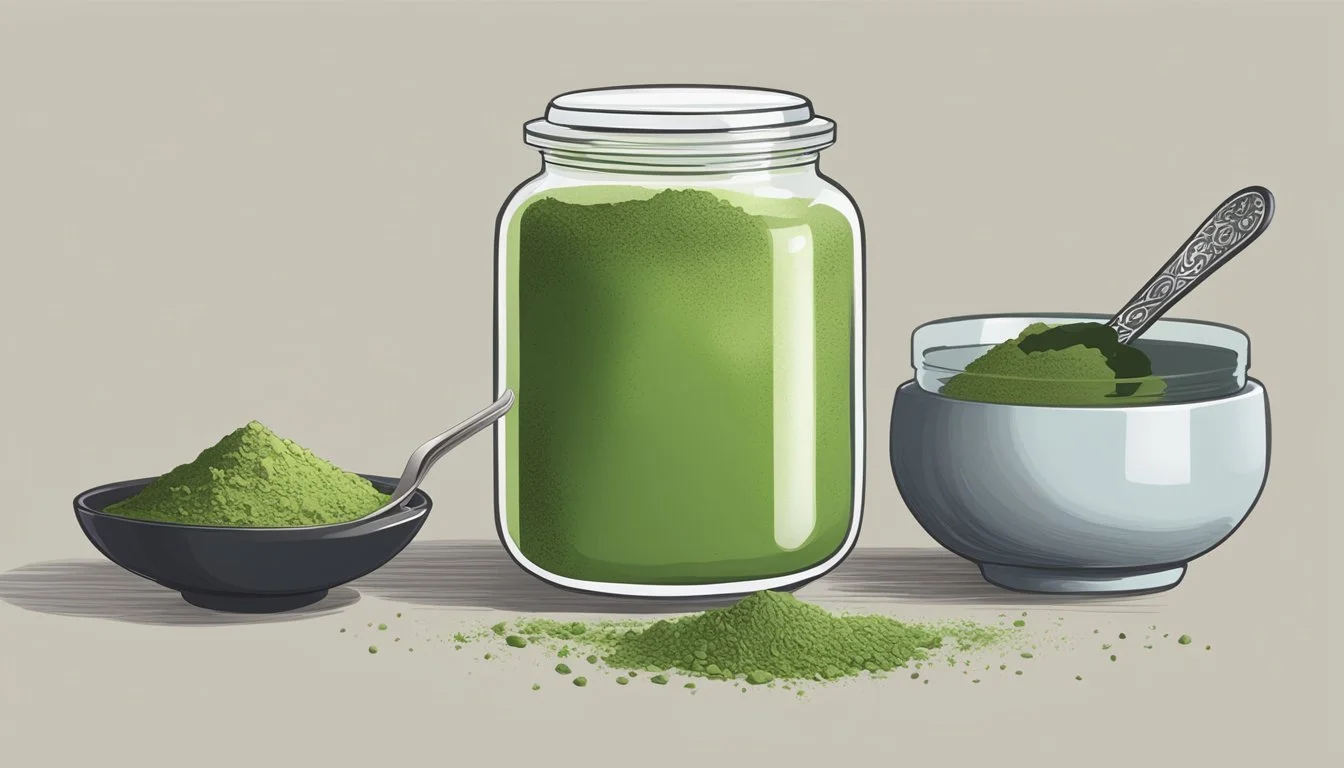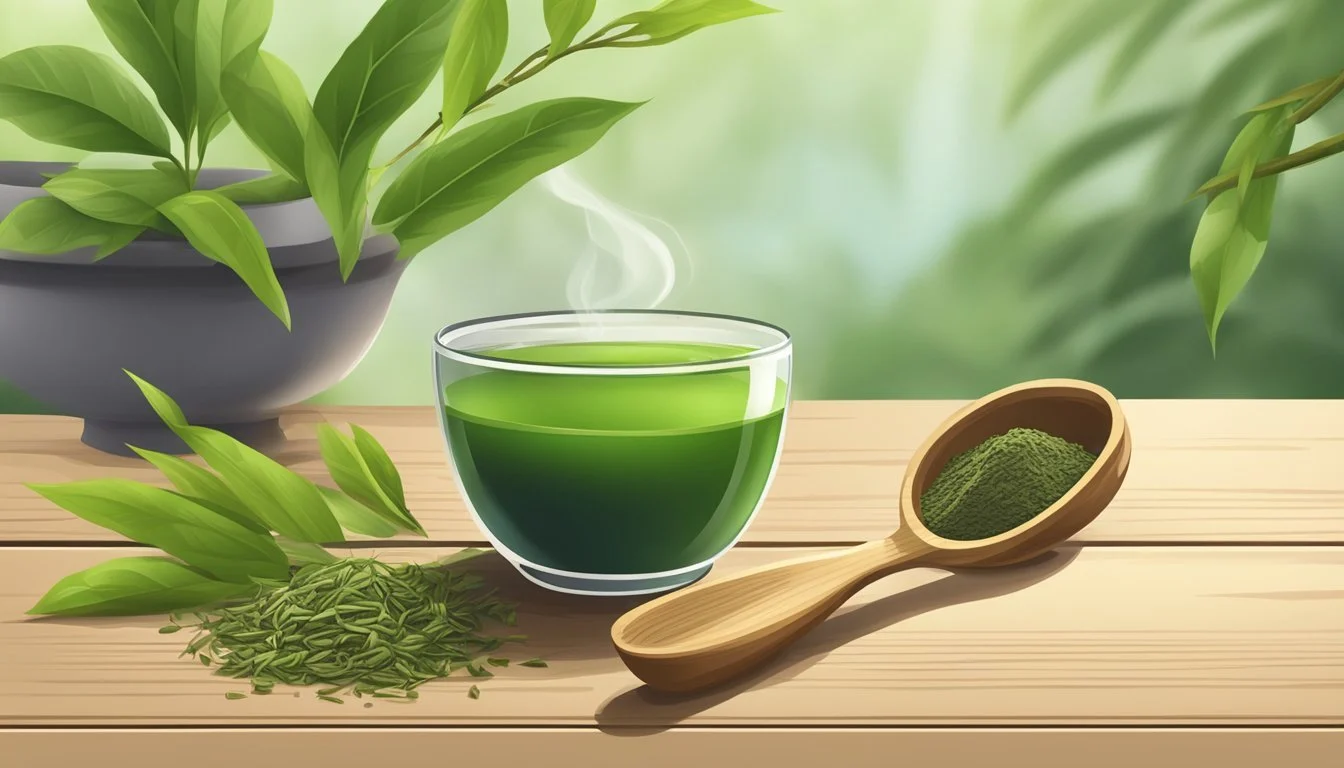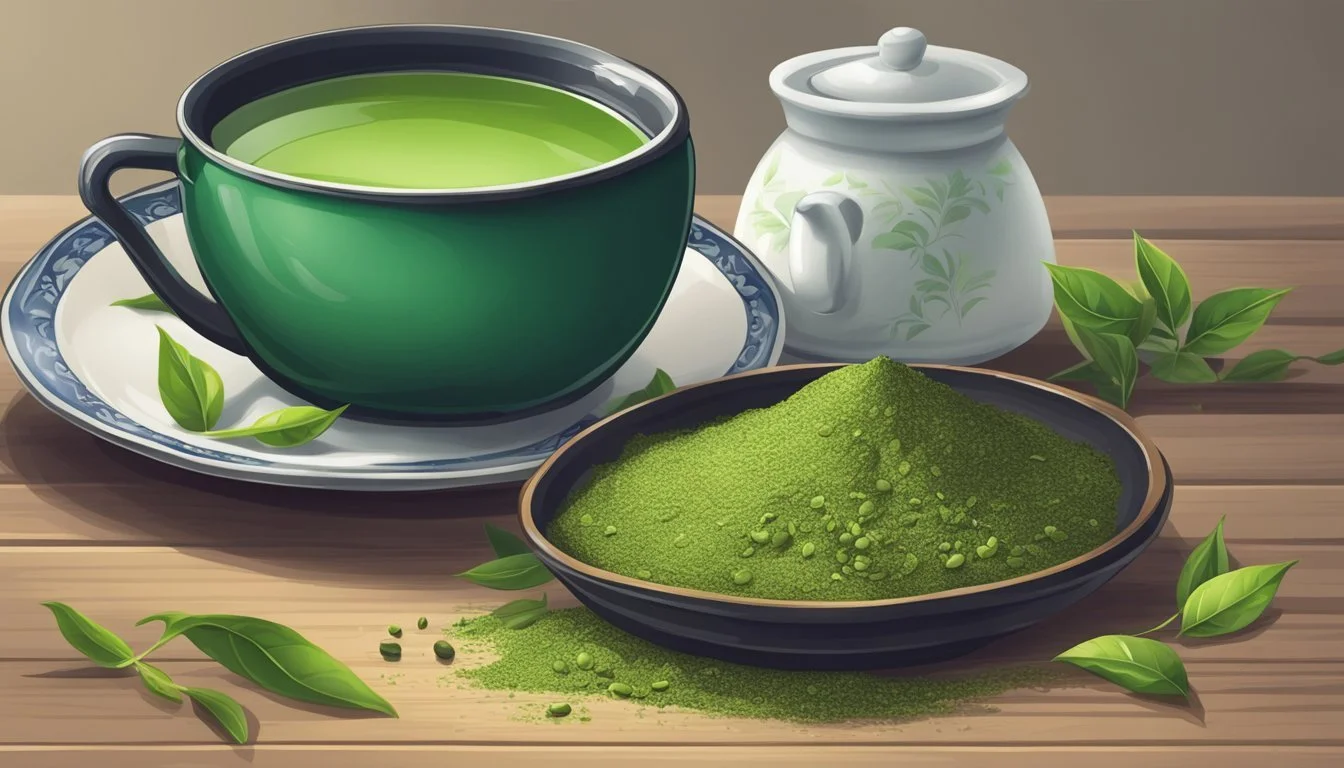Green Tea Powder Substitutes
Top Alternatives for Your Recipes
Green tea powder, particularly matcha, holds a revered place in both traditional and modern beverage culture, celebrated for its rich flavor profile and numerous health benefits. Matcha is a finely ground powder made from specially grown and processed green tea leaves, prized for its concentrated flavors and antioxidants. However, for reasons ranging from dietary restrictions to personal taste preferences, individuals may seek substitutes for matcha powder. For those looking to replicate or approximate the experience of matcha, exploring alternatives is a practical approach that can yield enjoyable and healthful options.
When considering a substitute for matcha powder, the alternatives should ideally maintain the integrity of the original's flavor, color, and nutritional profile. Substitutes like green tea leaves offer a similar taste and antioxidant properties, although they are not as concentrated as matcha. Other substitutes, such as spirulina powder and wheatgrass powder, also present commendable replacements due to their comparable nutrient density and green hue. Each option brings its own unique characteristics and potential health benefits, allowing individuals to tailor their choice to their specific needs and preferences.
Although there are several alternatives available, it is important to recognize that the nuances of matcha's taste and texture might not be fully replicated by any single substitute. Finding the most suitable matcha powder substitute is often a matter of personal experimentation, gauging the right balance of flavor and nutritional content. Adjusting the quantity of the chosen substitute to align with one's palate is a critical step in achieving the desired outcome in both beverages and culinary applications.
Understanding Green Tea Powder
Green tea powder, particularly matcha, has a storied history in Japan and comes in various grades, each with its own purpose and characteristics.
Historical Context of Matcha in Japan
Matcha is a fine, powdered green tea originally used in traditional Japanese tea ceremonies. It emerged in Japan during the Kamakura period when Buddhist monks introduced it for its meditative benefits. The preparation and consumption of matcha evolved into a ceremonial ritual by Japanese tea masters, reflecting Zen Buddhist philosophies and signifying hospitality and artistry.
Tea Ceremony: Zen Buddhism
Matcha Introduction: Kamakura Period
Matcha Powder Grades
Matcha powder is differentiated into two primary grades: ceremonial grade and culinary grade.
Ceremonial Grade Matcha
This is the highest quality used mainly in tea ceremonies and meditation practices. It's characterized by a vibrant green color, a fine texture, and a naturally sweet taste due to its growth in the shade, which increases chlorophyll content and amino acids.
Texture: Fine
Flavor: Naturally sweet
Use: Tea ceremonies, sippingCulinary Grade Matcha
Culinary grade matcha is more robust and is typically used for cooking and baking. Its stronger flavor holds up well when combined with other ingredients, making it suitable for matcha-infused recipes.
Flavor: Stronger, more bitter
Use: Cooking, baking, smoothies, lattes
Health Benefits of Green Tea Powder
Green tea powder, notably matcha, is prized for its rich concentration of nutrients and health-promoting compounds. This section explores the specific components that contribute to its health benefits.
Nutrient Content
Green tea powder offers a dense nutrient profile, with a single serving containing vital minerals and vitamins. Among these are:
Magnesium: Essential for bone health and energy production.
Iron: Crucial for oxygen transport and energy release.
Zinc: Plays a role in immune function and skin health.
Potassium: Important for fluid balance and nerve function.
Fiber: Aids in digestive health.
Antioxidant Profiling
Matcha green tea powder is particularly rich in antioxidants known as polyphenols, which include:
Catechins: a class of powerful antioxidants that help to prevent cell damage.
Chlorophyll: contributes to the vivid green color of matcha and has cleansing properties.
The abundance of these antioxidants provides antimicrobial and antioxidant properties which can protect against various health issues.
Cognitive and Mood Enhancement
Matcha green tea powder is not only nutritious but also beneficial for mental clarity and mood. Key compounds include:
L-theanine: An amino acid that promotes relaxation without drowsiness and works synergistically with caffeine to enhance focus and concentration.
Caffeine: A known stimulant that improves alertness and reaction time.
Together, these compounds interact to enhance cognitive functions and mood regulation.
Caffeine in Green Tea Powder
In the realm of green tea powders, caffeine content is a significant consideration, with matcha tea standing out for its unique time-release effect on energy and focus.
Comparing Caffeine Levels
Green tea powder typically contains caffeine, a known stimulant that can provide an energy boost. The caffeine content in green tea powder can vary, but generally, it contains less caffeine compared to coffee and slightly less than black tea. As a point of reference, here is an average caffeine content comparison in milligrams (mg):
Matcha tea: 70 mg per serving
Coffee: 95 mg per serving
Black tea: 47 mg per serving
Oolong tea: 37 mg per serving
It's important to note that these amounts can fluctuate based on the brand and preparation of the tea or coffee.
Time-Release Effect of Matcha Caffeine
Matcha tea, a type of green tea powder, is distinguished by its combination of caffeine and an amino acid called L-theanine. This synergy promotes a unique time-release effect, which means that the caffeine in matcha is absorbed and released over a period of time, usually 6-8 hours. Consequently, this leads to a more sustained energy boost without the quick spike and crash often associated with coffee. Users often report a state of alert focus, attributed to the presence of L-theanine, which is thought to modulate the impact of caffeine on the body.
Popular Substitutes for Matcha Powder
Exploring substitutes for matcha powder involves examining a variety of herbal, superfood, and traditional tea options. These alternatives are selected based on their flavor profiles, nutrient content, and potential to provide an energy boost similar to matcha.
Herbal and Superfood Alternatives
Matcha powder is renowned for its nutrient density and health benefits. For those seeking similar superfood qualities, Spirulina powder and Moringa powder are viable substitutes. Spirulina, a type of blue-green algae, is rich in protein, vitamins, and minerals. It imparts an earthy flavor and is often used in smaller quantities due to its potent taste. Moringa powder, derived from the dried leaves of the moringa tree, provides a mild taste and is packed with proteins, vitamins, and antioxidants.
Spirulina Powder: Start with a 1/2 teaspoon per 1 teaspoon of matcha.
Moringa Powder: Use a 1:1 ratio with matcha powder for recipes.
The lesser-known Barley grass powder and Wheatgrass powder also offer impressive nutritional benefits, including high fiber content and vitamins. Their flavors are generally milder, making them easy additions to smoothies and juices.
Barley Grass Powder: Substitute at a 1:1 ratio with matcha.
Wheatgrass Powder: Also replaceable in a 1:1 ratio but adjust to taste.
Tea Variants and Brews
If the objective is to mimic the tea flavor of matcha, options like green tea in loose-leaf or bag form can be brewed and used as a less concentrated alternative. Additionally, Yerba Mate offers a robust flavor and contains caffeine and antioxidants, thus serving as both a flavor and energy enhancer replacement.
Green Tea: Brew as normal and use in place of matcha powder.
Yerba Mate: Successfully substitutes matcha in a 1:1 ratio for beverages.
For a less caffeinated route, herbal teas such as Chamomile tea or Honeybush provide unique taste profiles. While they lack the caffeine kick, they can offer soothing flavors in any recipe asking for matcha.
Assessing Flavor and Nutritional Profile
When selecting an alternative to matcha powder, understanding the desired outcome is crucial. Each substitute brings its own flavor and nutritional spectrum to the table. Some, like spirulina or barley grass powder, have substantive nutritional profiles but with flavors that may need some calibration according to personal taste. A balance between the flavor intensity and desired health benefits should guide the choice of matcha substitute.
Flavor: Superfoods often have strong flavors; start with small amounts.
Nutrients: Superfood powders generally excel in vitamin and mineral content.
Energy Boost: Components like caffeine in Yerba Mate mimic matcha's energizing effect.
Practical Considerations When Choosing Substitutes
When selecting a substitute for green tea powder, it is important for the reader to consider cost, flavor, and the specific health and energy benefits offered by alternatives.
Evaluating Price and Accessibility
Choosing a substitute often begins with price and accessibility. Green tea can vary in price, with matcha typically being among the more expensive tea powders. Substitutes such as green tea leaves, which are more commonly available, can provide a cost-effective alternative. It's crucial to weigh the availability of these substitutes in local stores or online against the convenience and desired quantity.
Matcha: Often premium-priced, may require speciality stores
Standard Green Tea: Widely accessible, generally affordable
Flavor Compatibility
The unique, rich flavor of matcha is stronger and earthier than most green tea leaves. When looking for a replacement based on flavor profile, consider:
Green Tea Leaves: Similar but milder flavor; use a higher quantity to intensify.
Wheatgrass Powder: Offers a different taste, can be earthy and sweet; start with a 1:1 ratio and adjust.
Comparing Health and Energy Benefits
The health benefits of matcha include high levels of antioxidants, polyphenols, and L-theanine, which contribute to increased energy and improved focus without the jittery side effects of caffeine alone.
Spirulina Powder: Nutrient-dense, provides energy boost; differs in taste.
Moringa Powder: Rich in vitamins, an energy enhancer with mild flavor.
Chlorophyll Drops: Concentrated health benefits; may lack the comprehensive profile of matcha.
Each substitute carries its unique set of health benefits that need consideration against matcha's known nutritional profile. Users should examine how these substitute powders align with their dietary needs and energy demands.
Preparation and Usage Tips
When seeking substitutes for matcha green tea powder, understanding the proper preparation and usage is crucial to achieving the desired flavor and health benefits. Each substitute has its unique properties but can be integrated into daily routines to harness their advantages.
Brewing Instructions for Substitutes
The proper brewing of tea substitutes is vital for extracting the optimal flavor and health components. For green tea, a 1:1 substitution ratio is recommended when replacing matcha. To brew, one should generally heat water until just before boiling and then steep the tea or tea substitute for no longer than three minutes to prevent bitterness.
Barley Grass Powder: Simulate matcha's brewing technique by whisking the substitute in hot water.
Wheatgrass Powder: Also use a 1:1 ratio; blend with water and strain if necessary to achieve a smooth consistency.
Dietary Incorporation
Tea substitutes can be more than just a beverage; they are an opportunity to enhance dietary fiber and incorporate superfoods into one's diet.
Smoothies: Add a teaspoon of the chosen substitute to increase the nutritional value.
Baking and Cooking: Integrate the powder into recipes for an added health boost, suitable even for those following a plant-based diet.
Traditional Tools and Techniques
To fully embrace the tradition of matcha tea, one might use specialized tools like the chasen (bamboo whisk), which helps in creating a frothy texture typical of a high-quality matcha.
Chasen: Ideal for whisking any fine powder into a liquid, ensuring even distribution and reducing clumping.
Japan: Origin of many of these techniques; understanding their brewing methods can improve the preparation of tea substitutes.
Adopting these practices can help individuals enjoy the subtle nuances and potential health benefits of green tea substitutes, even beyond the borders of Japan.
Concluding Insights
When considering a substitute for matcha powder, one should weigh not only the flavor profile but also the health benefits associated with the alternatives. Variants such as green tea powder offer a practical one-to-one replacement in most culinary applications. It maintains a similar antioxidant profile, although the flavor may be less intense compared to matcha.
For those seeking the closest nutritional match, moringa powder and spirulina powder emerge as top contenders. Moringa, replete with vitamins and minerals, carries a mild taste, while spirulina stands out with its distinctive earthy flavor and is packed with protein.
If matching the caffeine content of matcha is of importance, yerba mate can be a suitable substitute. Yerba mate boasts an energizing effect with a unique, bold flavor and a comparable level of antioxidants.
In contrast, options like wheatgrass powder and chlorophyll drops might appeal to those prioritizing certain health aspects without the caffeine.
Here's a succinct comparison:
Green Tea Powder: Similar antioxidants; milder flavor; 1:1 ratio.
Moringa Powder: High in nutrients; mild taste; adjust to preference.
Spirulina Powder: Rich in protein; earthy taste; start with 1/2 tsp per tsp of matcha.
Yerba Mate: Caffeinated; robust flavor; 1:1 ratio.
Wheatgrass Powder: Nutrient-dense; mild taste; 1:1 ratio.
Individuals must fine-tune quantities to suit their personal taste and desired nutritional value. Each alternative embodies a unique facet of matcha, yet extends a different gustatory and wellness profile. Selecting a substitute for matcha powder is ultimately informed by one's purpose for consumption, whether it be for taste, health benefits, or both.








